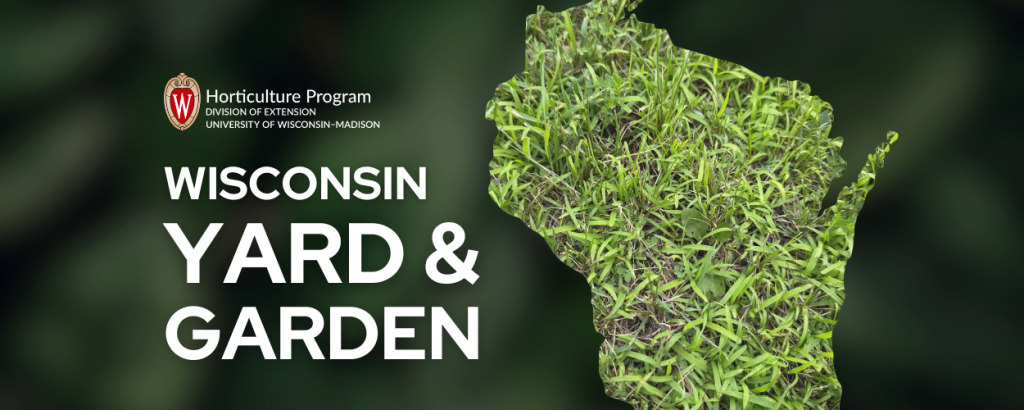
Warm weather and rainfall have been the story over most of Wisconsin in the past few weeks. Two visible lawn problems that have developed with these conditions are rapidly emerging crabgrass plants and small blighted areas of red thread and pink patch disease.
Crabgrass is a warm-season grass, growing best in hot summer weather. Most lawn grasses are cool-season species, which tend to slow down in the heat, giving crabgrass a big advantage. Crabgrass also needs sunlight to develop, so will appear in sunny lawn areas that are usually thin for some reason. Right now, crabgrass is readily visible as lighter green, rapidly growing grasses, especially in areas such as south slopes, along driveways or sidewalks, or other areas with thinner lawns or bare soil.
Postemergence herbicides are available to manage existing crabgrass plants, but they need to be applied to small crabgrass plants that have just emerged. Typically, crabgrass is noticed too late for these to be effective. However, remember crabgrass is an annual, so plants appearing in lawns in summer will die as temperatures drop in fall.
The suggested strategy to avoid crabgrass next season would be to improve lawns through cultural practices, making them denser to resist weed encroachment. Start with raising mowing heights, as crabgrass thrives in closely mowed lawns, and return clippings to recycle nitrogen. Fertilize in moderation to keep lawns vigorous but do not fertilize in the heat of summer. Labor Day is the next key time for fertilizing lawns.
Carefully examine areas where crabgrass populations are high to determine underlying causes of thin lawns and take steps to correct them. Lawn areas damaged by snow removal, deicing salts, vehicle or high foot traffic, or construction activities may be potential causes of crabgrass invasions now. Core aerating can help alleviate underlying compacted soils.
Thin areas may require overseeing or renovation but now is not the suggested time. Wait until late August or early September, when the weather is cooler and weed pressure is light, for those types of lawn practices.
Small, blighted patches in lawns with a reddish or pinkish cast to them are caused by either red thread or pink patch, two closely related fungal diseases. Close examination will reveal reddish or pinkish threadlike appendages on leaf blades, typical of red thread. Pink patch looks similar but is often more like pink cotton candy sticking leaf blades together. Wet weather and humidity have been favorable for disease development.
Neither disease is considered serious but will tend to fade away as conditions dry out. Fertilize your lawn at the next suggested time, which will be about Labor Day.

About the Author
Bruce Spangenberg is a Horticulture Outreach Specialist with UW-Madison Division of Extension. Get answers to your lawn, landscape and garden questions anytime at “Ask Your Gardening Question.”




